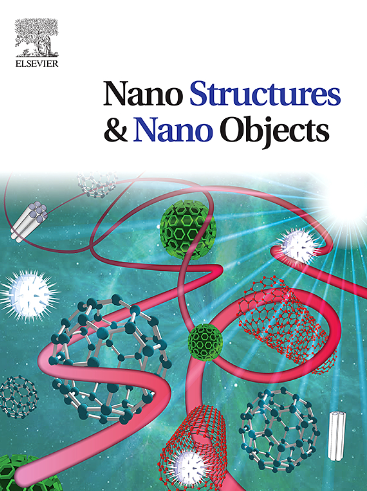抗氧化剂的纳米结构递送系统:纯化鞣花酸和提取的多酚的比较释放
IF 5.45
Q1 Physics and Astronomy
引用次数: 0
摘要
尽管多酚类化合物具有抗氧化和抗癌功效,但其生物利用度有限,因此需要使用聚合物材料进行封装,以实现精确和持续的释放。本研究以聚乙烯醇为稳定剂,将鞣花酸(EA)和富酚山核桃提取物(PRE)包裹在聚ε-己内酯(PCL)微颗粒中,形成双乳液体系。溶剂蒸发后,采用DLS、SEM、FTIR对所得颗粒进行表征,并将其在PBS (pH 7.4)中的体外释放量量化为释放分数(F)。发布数据拟合为零阶、一阶、Higuchi、Korsmeyer-Peppas和Hixson-Crowell模型。当EA浓度为2.5和5.0 mg/mL时,ln(1−F)与时间的相关性最高(R2≈0.93),表明其为一级释放,而当浓度为10 mg/mL时,立方根转化((1−F)1/3vs.t)达到了较好的拟合,与表面侵蚀动力学一致。虽然EA和PRE的整体机制相似,但PRE的释放速度明显慢于浓度依赖,特别是在高负荷下,这表明其复杂的酚基质对扩散和侵蚀途径的调节不同于纯EA。这些发现强调了PCL/PVA基质对亲水酚的可调性,并强调了生物活性化合物浓度在决定扩散和侵蚀控制释放方面的重要性。为持续递送生物活性化合物提供纳米医学平台。本文章由计算机程序翻译,如有差异,请以英文原文为准。
Nanostructured delivery systems for antioxidants: Comparative release of purified ellagic acid and extracted polyphenols
Despite their proven antioxidant and anticancer effectiveness, polyphenolic compounds have limited bioavailability, which drives the need to employ polymeric materials for their encapsulation to achieve precise and sustained release. In this study, ellagic acid (EA) and a phenolic-rich pecan nut extract (PRE) were encapsulated within poly(ε-caprolactone) (PCL) microparticles in a double emulsion system using poly(vinyl alcohol) as stabilizer. After solvent evaporation, the resulting particles were characterized by DLS, SEM, and FTIR, and in vitro release in PBS (pH 7.4) was quantified as the fraction released (F). Release data were fitted to zero-order, first-order, Higuchi, Korsmeyer–Peppas, and Hixson–Crowell models. For EA at 2.5 and 5.0 mg/mL, versus time exhibited the highest correlation (), indicating first-order release, whereas at 10 mg/mL, the cube-root transformation () achieved superior fit, consistent with surface-erosion kinetics. Although both EA and PRE follow similar overall mechanistic regimes, PRE exhibits significantly slower, concentration‑dependent release, particularly at higher loadings, indicating that its complex phenolic matrix modulates diffusion and erosion pathways differently than pure EA. These findings underscore the tunability of PCL/PVA matrices for hydrophilic phenolics and highlight the importance of bioactive compound concentration in dictating diffusion versus erosion-controlled release, offering a nanomedicine platform for sustained delivery of bioactive compounds.
求助全文
通过发布文献求助,成功后即可免费获取论文全文。
去求助
来源期刊

Nano-Structures & Nano-Objects
Physics and Astronomy-Condensed Matter Physics
CiteScore
9.20
自引率
0.00%
发文量
60
审稿时长
22 days
期刊介绍:
Nano-Structures & Nano-Objects is a new journal devoted to all aspects of the synthesis and the properties of this new flourishing domain. The journal is devoted to novel architectures at the nano-level with an emphasis on new synthesis and characterization methods. The journal is focused on the objects rather than on their applications. However, the research for new applications of original nano-structures & nano-objects in various fields such as nano-electronics, energy conversion, catalysis, drug delivery and nano-medicine is also welcome. The scope of Nano-Structures & Nano-Objects involves: -Metal and alloy nanoparticles with complex nanostructures such as shape control, core-shell and dumbells -Oxide nanoparticles and nanostructures, with complex oxide/metal, oxide/surface and oxide /organic interfaces -Inorganic semi-conducting nanoparticles (quantum dots) with an emphasis on new phases, structures, shapes and complexity -Nanostructures involving molecular inorganic species such as nanoparticles of coordination compounds, molecular magnets, spin transition nanoparticles etc. or organic nano-objects, in particular for molecular electronics -Nanostructured materials such as nano-MOFs and nano-zeolites -Hetero-junctions between molecules and nano-objects, between different nano-objects & nanostructures or between nano-objects & nanostructures and surfaces -Methods of characterization specific of the nano size or adapted for the nano size such as X-ray and neutron scattering, light scattering, NMR, Raman, Plasmonics, near field microscopies, various TEM and SEM techniques, magnetic studies, etc .
 求助内容:
求助内容: 应助结果提醒方式:
应助结果提醒方式:


